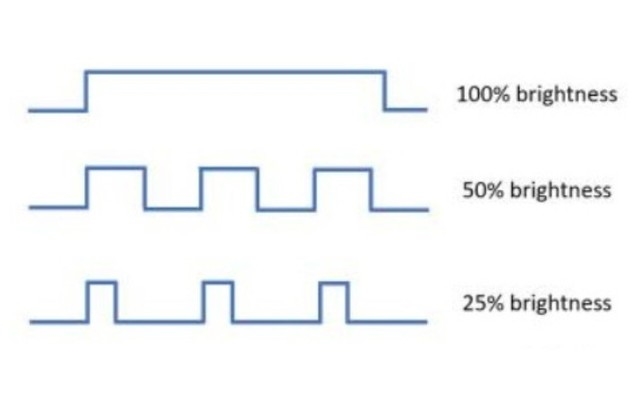Correlation Between PWM Dimming Frequency and Human Eye Vision
In this article we will get to learn more about the PWM dimming and its effect upon human eye vision while the device is at work.
The PWM dimming frequency should be above 100Hz to avoid the human eye to observe the LED flickering phenomenon. During PWM dimming, set the maximum and minimum LED average current as ILED (ma.), ILED (min), and the maximum duty cycle The ratio and the minimum duty cycle are [) m in order. X, Dmin.
PWM dimming hurts eyes
PWM dimming hurts the eyes. This is something that many people complain about, but some people don't agree. When someone is confused about this, when they look at the screen seriously, they feel that the pwm dimming screen is still ok, and they will not feel the irritation of hurting the eyes, and the human eye cannot distinguish more than a certain frequency of light, which hurts the eyes. The conclusion seems unreasonable.

Briefly, PWM refers to controlling the on-off of the switching device of the inverter circuit, so that the output terminal gets a series of pulses of equal amplitude, and these pulses are used to replace the sine wave or the required waveform.
It seems to be complicated, but as long as you understand, the full name of PWM is Pulse Width Modulation, which means pulse width modulation. It is easy to understand from this name. It adjusts the brightness of the light source by controlling the time of the light source switch.
In other words, if we set the LED to be on for 0.1 seconds and off for 0.9 seconds over a 1 second period, we would see the light source only light up for a split second.

But if you divide 0.1 seconds and 0.9 seconds into even hundreds or even thousands, you will feel that the LED lasts for 1 second at 10% brightness, which is how PWM dimming is implemented.
The reason why it is said that PWM dimming will damage eyesight is because the frequency of some dimming is not high, although we do not notice it, but its essence is a continuous on-off process, which will cause a frequent flickering impact on the eyes, which is very easy. cause visual fatigue.
So why do so many monitors still use PWM dimming? The first is low cost. A MOS switch is added to the load of the LED, and PWM dimming can be realized with the help of the fast response characteristics of the LED.
In addition, PWM dimming will not cause color shift. Because the LED light source is working at 100% brightness during the working cycle, it will not affect the display of color.
Once again, PWM dimming has high accuracy. As long as the MOS is properly controlled, the brightness adjustment of 1‰ can be achieved, and the screen can also be very uniform at low brightness, making the display effect better.
However, it should be noted that the rate of LED dimming should be as high as possible, and the low-frequency PWM seems to have screen flicker or especially under the camera. Set it to a high frequency and it will look comfortable.
Contact:
Phone: +86-13510672827
E-mail: contact@vtecklite.com
Add: 6FL, Chuangcheng Mansion,Taiwan Industrial Estate,Shiyan Shenzhen China